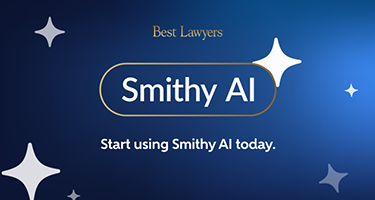Divorce is never simple, but understanding your legal rights can make a difficult process more manageable. In New York, divorce law is governed by a mix of long-standing principles and evolving court practices. Whether you're filing in Manhattan or Monroe County, the rules are the same statewide—though procedures and costs may vary by location.
This guide covers the major aspects of divorce rights in NY. From residency requirements to property division and custody, we break down complex topics. Laws can change, so it’s always wise to consult a qualified divorce attorney who knows the current landscape.
NY Divorce Requirements and Residency Rules
To file for divorce in New York, you must meet specific residency requirements. These rules ensure the state has jurisdiction over your case and are among the strictest in the country. Whether you live in Manhattan or a small town in the Finger Lakes, the same statewide rules apply.
You qualify to file for divorce in New York if any one of the following conditions is met:
- You were married in New York and either you or your spouse has lived in the state continuously for at least one year before filing.
- You and your spouse lived together in New York as a married couple and at least one of you has maintained continuous residence in the state for one year or more.
- You weren’t married in New York, but either you or your spouse has lived in the state continuously for at least two years prior to filing.
- The grounds for divorce occurred in New York and one spouse has lived in the state for at least a year before starting the divorce process.
- Both spouses were living in New York when the divorce was filed and the events that led to the divorce happened in-state.
If you don’t meet at least one of these requirements, your divorce case may be dismissed for lack of jurisdiction. It’s important to talk with a divorce attorney early on, especially if your situation involves recent relocations or time spent living in multiple states.
No-Fault and Fault-Based Divorce Grounds
New York is a mixed divorce state, meaning it allows both no-fault and fault-based divorces. The most common ground today is no-fault, meaning the marriage has experienced an irretrievable breakdown for at least six months. No one needs to prove wrongdoing, which streamlines the process.
Fault-based grounds still exist under New York State divorce law. These include cruel and inhuman treatment, abandonment for more than a year, adultery or incarceration for three or more years. While rarely used, they may be relevant in contested cases involving asset division or custody.
Contested vs. Uncontested Divorce in NY
A contested divorce means one or more issues are disputed. That often translates to longer timelines, more stress and higher costs. The contested divorce NY cost can range from several thousand to tens of thousands of dollars, depending on complexity. Custody battles or high-value asset disputes will drive up expenses.
An uncontested divorce means both spouses agree on all major issues: division of property, child custody, support and more. These cases tend to move faster and cost less. In NYC and across the state, uncontested divorces may be resolved without setting foot in a courtroom.
Division of Property and Assets
New York follows equitable distribution rules. This doesn’t mean a 50/50 split. Instead, the court divides marital assets fairly based on a variety of factors. These include income, contributions to the marriage (financial and non-financial), length of the marriage and future needs.
Property is classified as either marital or separate. Marital property includes assets acquired during the marriage, while separate property includes inheritances, personal gifts or pre-marriage assets.
Does the wife always get half in a divorce in New York? No—that’s a common myth. The court evaluates each spouse’s circumstances to reach a fair outcome.
Alimony (Spousal Maintenance)
New York law recognizes two types of alimony: temporary (while the divorce is pending) and post-divorce maintenance. Courts use formulas to calculate amounts, but judges also consider factors like income disparity, health, age and lifestyle during the marriage.
There’s no minimum number of years you have to be married to get alimony. However, longer marriages generally result in longer durations of support. A marriage of 20 years will likely lead to more extended payments than a 2-year union.
Child Custody and Support
Custody decisions are based on the best interest of the child standard. Courts weigh factors such as the child’s relationship with each parent, stability of the home and each parent’s ability to provide care. Depending on the child’s age and mental capacity, a judge may ask the child for their preference on which parent they would like to live with, but the judge is not required to follow the child’s request.
Child support in New York is determined by a formula tied to both parents’ incomes and the number of children. The goal is to maintain the child's standard of living. NY divorce laws prioritize consistency and cooperation between co-parents and judges will often encourage mediation where possible.
Frequently Asked Questions
Below are answers to common questions about divorce rights, entitlements and legal procedures in New York.
What Is a Wife Entitled to in Divorce in NY?
A wife may be entitled to a share of marital property, spousal support and parenting time, depending on the facts of the case. Gender doesn’t automatically entitle a spouse to specific rights—the court assesses need, contribution and circumstances.
If the couple shares children, parenting time and custody will be evaluated separately. Financial needs, housing and each parent's role in the child's life all play a role in custody decisions.
Can I Divorce Without Going to Court?
Yes, if both parties agree on all terms, an uncontested divorce can be finalized with minimal court involvement. You’ll still need to file paperwork and receive court approval, but no in-person hearing may be required.
Online filings and administrative procedures are increasingly common, especially in NYC courts. However, more complex situations almost always require court review.
How Are Assets Split in a Divorce in NY?
Assets are split under equitable distribution. Marital assets may be divided in ways that are not equal but are deemed fair. For example, one spouse may receive more liquid assets while the other retains the family home.
The court takes a holistic view—looking at income, future earning potential, age, health and financial contributions. Each case is unique and formulas are adjusted accordingly.
What Are the New Divorce Laws in NY?
As of mid-2025, no major updates to New York divorce law have been enacted. That said, small procedural changes happen regularly. It’s smart to check with a lawyer to stay current.
Some pending bills in the legislature may affect family law in the future, especially related to digital filings and parenting time frameworks. Be proactive about updates if you’re mid-divorce.
Legal Process and Divorce Timeline
Getting divorced in New York involves several structured steps, each with legal significance. While the timeline can vary based on whether the case is contested or uncontested, the general process remains the same across the state.
1. Filing the Summons and Complaint
Divorce begins when one spouse (the plaintiff) files a Summons with Notice or a Summons and Verified Complaint with the Supreme Court in the appropriate county. This document outlines the intent to divorce and includes the grounds. Filing establishes the official start date of the case and triggers legal obligations for both parties.
2. Serving the Other Party
After filing, the plaintiff must serve the other spouse (the defendant) with the divorce papers within 120 days. Service must be done via personal service—hand-delivered by someone who is not a party to the case and is over 18. If personal service is not possible, the court may permit alternative methods. Proof of service must then be filed with the court.
3. Defendant’s Response
Once served, the defendant has a set period (20 days if the defendant lives in NY and 30 days if they live out of state) to respond, either by agreeing, disagreeing, or filing a counterclaim. If they fail to respond, the plaintiff can seek a default judgment. If the defendant contests the case, the divorce proceeds through litigation.
4. Preliminary Conference (Contested Cases Only)
In contested divorces, the court schedules a preliminary conference to establish timelines, exchange financial disclosures and outline the issues in dispute—such as custody, support or division of assets. This conference ensures the case progresses efficiently and gives both parties a roadmap of what to expect.
5. Discovery Phase
Discovery involves the formal exchange of financial documents and other relevant information. Both spouses must disclose income, assets, debts and expenses. This step is critical for equitable distribution and determining support obligations. It can include subpoenas, depositions and interrogatories if necessary.
6. Settlement Discussions or Mediation
Many cases are resolved through negotiated settlement. The parties, often with their attorneys, may reach agreements on all or some issues. Courts may also encourage or require mediation to resolve disputes. If an agreement is reached, it’s written into a Settlement Agreement and submitted for court approval.
7. Trial (If No Agreement Is Reached)
If settlement efforts fail, the case proceeds to trial before a judge. Each side presents evidence and witnesses on issues like custody, maintenance or asset division. The judge then issues a decision, which becomes part of the final divorce judgment.
8. Judgment of Divorce
Once all matters are resolved the judge signs a Judgment of Divorce. This document finalizes the dissolution of the marriage. The court clerk then enters the judgment and issues a Certificate of Dissolution if requested.
An uncontested divorce in New York can be finalized in 3–6 months, while contested divorces often take a year or more, particularly in crowded NYC courts. Unlike some states, New York does not have a mandatory waiting period after filing before a divorce can become final.
When to Talk to a Divorce Lawyer
Even the most amicable divorces can involve legally complex issues. An experienced attorney helps you navigate court rules, protect your rights and finalize fair agreements on support and parenting.
If children, real estate or significant assets are involved, professional guidance is essential. To find a qualified lawyer, Best Lawyers peer-reviewed directory is reliable and trusted across New York.































